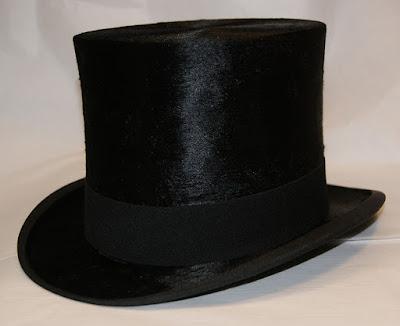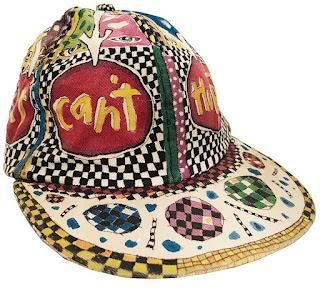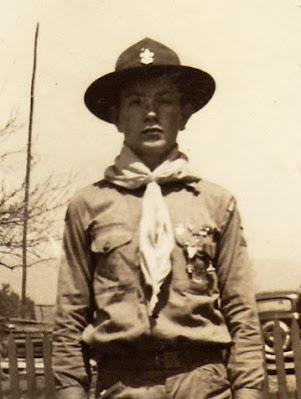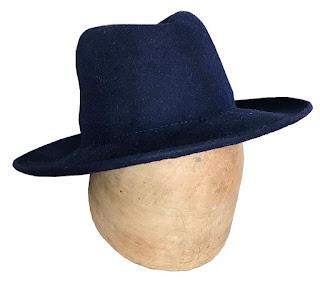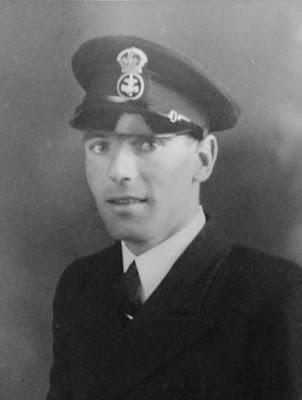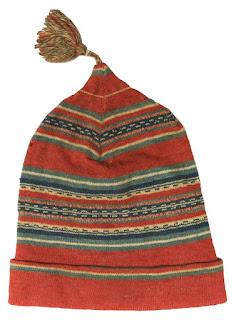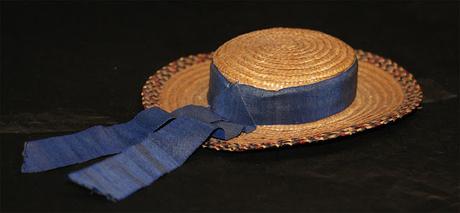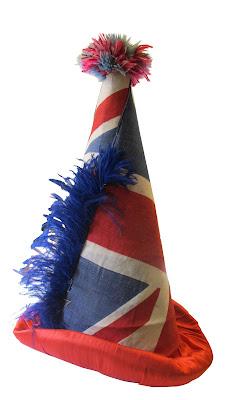TopHat
Lancashire County Museum Service Collection
Photo credit: Lancashire County Museum Service
In modern society, hats are now much more an expression of fashion and individual taste rather than a marker of social status. And it is therefore in this evolution that we can see the evolution of society itself and the changes that have prevailed, particularly over the last two hundred years. (1)
So who collects hats? Well I have over 35 hats. They protect my pate, amuse me and are worn as fashion statements. They range from those that keep me warm in winter and cool in the summer to fanciful pointy stripy festival hats, a psychedelic trilby, a vintage bowler and multiple caps. I often sport colourful ones when delivering creative workshops to add a bit of fun and be easily identifiable. The Art Can’t Hurt You cap is a good example.Designer Fred Bobb's Art Can't Hurt You Cap, c 1980s
Kate Eggleston-Wirtz Collection
Photo credit: Kate Eggleston-Wirtz
I also have hats that are sentimental. One of my favourites is my father’s boy scout broad-brimmed felt campaign hat vintage 1930s. I enjoy the look and feel of this hat and can wear it. I love it because it is a tangible object that connects me to my dad. Objects have incredible power to connect people through time and space; as stand-ins for those who are somewhere else walking about on the planet or sadly long departed.Herbert Eggleston, c 1930s
Photo credit: Kate Eggleston-Wirtz
After assessing my own hats and being mind-boggled at the actual sheer number of them, I was eager to find out about other collections. I contacted friends who I suspected had lots of headgear, and also colleagues at the Harris Museum, Art Gallery and Library, Lancashire County Council Museum Service and Fleetwood Museum. This is what came to light.Seamstress and skip diving crafter Anna France has ten to twenty pieces of headgear in her collection. Anna began collecting hats because she’d started dancing and needed a 1940s hat for the Lytham 40s Festival. That started it. She then said that if she sees something she likes, she then starts to collect. The hats have been no different. Recently Anna took her hat collecting to a higher level and learnt how to make a fedora constructed out of felt, using a steamer and a proper wooden hat block. (2)
Fedora Hat made by Anna France, 2022
Anna France Collection
Photo credit: Kate Eggleston-Wirtz
Artist Boz Phillips has currently about ten hats in her collection, although at one point she had about 30. She collects and wears them for warmth, fun and sartorial elegance; sometimes to cover up on a bad hair day. (3)Just like individuals, organisations collect hats and do so for many different reasons. Often, the hats looked after in museums are collected as representations of local people, ultimately helping to tell their stories that can then resonate with and educate the local contemporary community. Hats can bring stories to life.Fleetwood Museum is one such organisation that cares for 17 pieces of headgear; seven hats in the Fleetwood Museum Trust and ten hats in the Lancashire Collections. These hats date from around the 1930s to the 1980s and include girl grammar hats and general formal hats that belonged to Fleetwood people such as Thomas Stone’s black WW2 Royal Naval Volunteer Reserve (RNVR) hat. Stone was a former owner of the Prawner vessel Judy that is kept outside the museum. (4)Chief Petty Officer Tom Stone, c 1940s
Fleetwood Museum Trust Collection
Photo credit: Fleetwood Museum
Considering that Fleetwood is a coastal town. it is no
surprise that navy hats and sou’westers are part of the two
Fleetwood collections. These sou’westers are Fleetwood Museum’s Curator Assistant Zara Robinson’s favorite hats because they are “the traditional fishing hats, worn in most forms of fishing, deep sea and inshore fisheries. A big part of the trawlerman’s 'uniform.’” (5)Travelling down the coast to Preston, one will find two organisations that manage much larger collections. The Harris Museum, Art Gallery and Library is located on the Flag Market in Preston. It is currently closed for a £16 million refurbishment and will be reopening in 2024. Dr Caroline Alexander, Curator at the Harris puts forward:The Harris collects clothes like hats to tell a story about fashion and its development – where possible the museum also documents stories about the people who once made or wore these clothes. You can build up an interesting picture of Preston, as well as [the] fashion history, through the historic garments that survive in the collection. (6)In the Harris’ collection there are over 200 hats, and many represent the fashion industry and local people such as the well-known milliner Edna Deakin who was based on Church Street in Preston from 1938 – 1983. Edna’s was a flourishing business for nearly fifty years even during WW II, as hats were not rationed. The shop finally closed when Church Street was redeveloped by the council. (7)Cloche Hat, Deigned by Edna Deakin, c 1966
Harris Museum, Art Gallery and Library Collection
Photo credit: Harris Museum, Art Gallery and Library
I asked Caroline what might be her favorite hat in the Harris’ collection, she said that she loved the Deakin one, referring to the Cloche hat above. She then went on to say there was another favourite, a stripy knitted bobble hat from the early to mid 1800s. Why was this one of her favourites?It’s just such a cosy thing. Often hats are quite formal wear – so perhaps a bit harder to connect with. But this tasselled hat has always struck me as quite intimate. (8)Red and Blue Woollen Hat, c 1800-1850
Harris Museum, Art Gallery and Library Collection
Photo credit: Harris Museum, Art Gallery and Library
The Lancashire County Museum Service (LCMS) has over 500 items of head wear in its collection that are looked after in different museums and special storage areas across the county. Ten of these items are housed at Fleetwood Museum as mentioned earlier, and there are a large number of dolls’ hats/ headwear located at the Judges’ Lodgings in Lancaster. The LCMS collection also includes top hats, bowler hats, smoking caps, berets, helmets, military headwear, ladies and children’s bonnets, fancy dress/stage headwear and straw boaters.Straw Boater Hat
Lancashire County Museum Service Collection
Photo credit: Lancashire County Museum Service
Some of the gems in this collection are hats and headwear belonging to the actress and entertainer Hylda Baker (1905 – 1986), a Lancashire lass brought up in Farnsworth. The LCMS collection includes a mock medieval ladies hat, a multicoloured woolen beret and other headpieces used as stage props during Baker’s career, plus some hats from her own personal collection.Another hat to be noted is LCMS’s Curator Sarah Austin’s favourite, a Pierrot costume union jack hat. She writes:
It was made by a company in Southport called A. Thorpe and Sons and remarkably it was worn for a Victory Carnival to mark the end of the First World War. This type of ephemera rarely survives and this example is in amazing condition. It also tells a story of Britain at the end of the First World War and the hope and relief that must have come at the end of four years of war. It came from the collection of a Mrs Tatham that is the basis for a large part of our social history collection at LCC. (9)Pierrot Hat, c 1918
Lancashire County Museum Service Collection
Photo credit: Lancashire County Museum Service
There you have it, a sneak peek into Lancashire hat collections. Wonder what hats are lurking in your wardrobe?
HatsA bowler, a boater, a bucket, beret
for any occasion or time of the day.
A cowboy, stitched leather,
fedora with feather,
a pointed pierrot hat,
sou’westers to weather
bad weather on boats
on waves on the sea,
there’s always a perfect hat waiting for me.
A bowler, a boater, a bucket, beret
for any occasion or time of the day
A beanie well knitted,
fez felted and fitted,
a sun hat, a rain hat,
a slouch hat, a flat cap,
one hat for a party,
two hats are a pair,
more than two a collection, so many to wear.
Hats off to all those who took the time to share information about their fascinating collections of headwear, much appreciated.
Thank you for reading.
Kate
J1 Austin, S. (2023) Email to Kate Eggleston-Wirtz (KEW), 4 May.
2 Hoyle, A. (2023) Hats. Interview with KEW, 28 April.
3 Phillips, B. (2023) Email to KEW, 1 May.
4 & 5 Robinson, Z. (2023) Email to KEW, 1 May.
6 Alexander, C. (2023) Email to KEW, 25 April.
7 Arnold, James. (2023) Email to KEW 25 April.
8 Alexander, C. (2023) Email to KEW, 11 May. 9 Austin, S. (2023) Email to Kate Eggleston-Wirtz (KEW), 4 May
Email ThisBlogThis!Share to TwitterShare to Facebook
